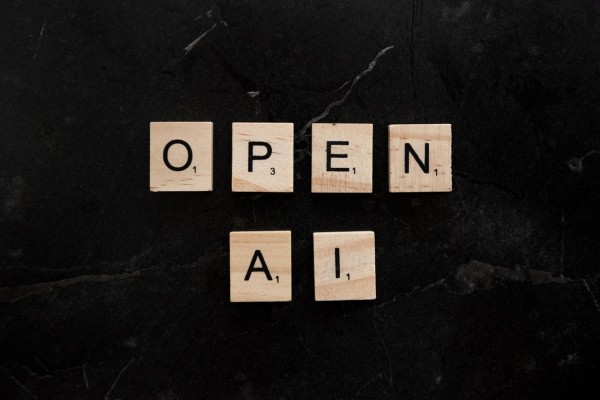Welcome to the world of Chat GPT and Agriculture! Have you ever wondered how artificial intelligence is revolutionizing the agriculture industry, making it more efficient, sustainable and profitable? Well, look no further than Chat GPT. This cutting-edge technology has been creating waves in many industries, including agriculture. Let us explore what Chat GPT is all about and its impact on agriculture. So hold tight and get ready for an exciting journey into the future of farming!
What is GPT?
GPT, or Generative Pre-trained Transformer, is a type of artificial intelligence that uses deep learning to generate human-like text. It was developed by Open AI and has been trained on vast amounts of data from the internet. Chat GPT can answer questions, and complete sentences and paragraphs in a way that resembles human writing.

GPT has many applications across various industries such as finance, healthcare, marketing and customer service. In agriculture specifically, Chat GPT is used for crop management and optimization. Farmers can use Chat GPT to get real-time insights on weather patterns, soil health and crop growth predictions. The technology works by analyzing historical data from sensors placed in fields which are then processed by algorithms that predict future outcomes based on previous trends. This allows farmers to make informed decisions about when to plant crops or how much water they should allocate per field. GPT's ability to process massive amounts of data quickly makes it an incredibly valuable tool for the agricultural industry. With more advanced AI technologies like Chat GPT being developed every day, we can expect even greater progress made towards sustainable farming practices in the future.
What is the impact of Chat GPT on Agriculture?
The impact of Chat GPT on Agriculture has been significant and rapidly growing in recent years. The use of GPT technology has revolutionized the way farmers approach crop production, animal husbandry, food processing, and distribution.

With the help of Chat GPT algorithms that learn from vast amounts of data to identify patterns and make predictions, farmers can accurately predict weather patterns and their effects on crops. This enables them to make informed decisions about when to plant or harvest crops and adjust irrigation schedules accordingly. Chat GPT also helps farmers make better use of fertilizers by helping them determine the precise amount needed for each crop based on soil type, nutrient content, moisture levels, etc. This reduces waste while increasing yields. Furthermore, Chat GPT plays a crucial role in ensuring food safety by detecting contaminants in processed foods. By analyzing large datasets from different sources such as sensors installed along food supply chains or historical data sets containing information about previous outbreaks of diseases caused by contaminated foods, GPT can alert authorities early enough to prevent widespread contamination. Overall, GPT is transforming Agriculture into an efficient industry that operates with more accuracy while reducing wastage which will ultimately meet global needs for food security without compromising environmental sustainability
The Future of Chat GPT and Agriculture
The future of Chat GPT and Agriculture is promising. As technology continues to advance, GPT can help farmers increase crop yields, reduce waste, and improve overall efficiency in the agricultural industry. One potential application for Chat GPT is in precision agriculture. By using machine learning algorithms and data analysis tools, farmers can collect real-time information about their crops and make more informed decisions about irrigation scheduling, fertilizer application rates, and pest management strategies. Another area where Chat GPT could have a significant impact is in predicting weather patterns. Farmers could use this information to plan planting schedules or harvest times better. They could also adjust their practices based on predictions of extreme weather events like droughts or floods. Moreover, with the growing demand for sustainable farming practices worldwide, there are already several startups working on developing AI-powered solutions to address these challenges. These range from soil monitoring systems that predict nutrient deficiencies to autonomous tractors that optimize seed placement. While it's still early days for Chat GPT integration into Agriculture fully-automated systems will eventually become an integral part of modern-day farming operations around the world as they continue to develop over time.
Conclusion
Chat GPT is revolutionizing the way we approach agriculture. With its ability to analyze data and provide insights faster than any human could, it has the potential to transform farming practices on a global scale. The impact of Chat GPT on agriculture will only continue to grow as more farmers and researchers adopt this technology. The future possibilities are endless, from optimizing crop yields to reducing food waste and ensuring sustainable practices for generations to come. However, while Chat GPT may be incredibly powerful, it cannot replace the importance of human knowledge and experience in agriculture. Farmers must still use their skills and expertise alongside these technological advancements in order to maximize their benefits. As Chat GPT continues to evolve and improve over time, we can expect even greater innovations that will help us tackle some of the most pressing challenges facing our planet today. It is an exciting time for agriculture, full of promise for a brighter future.
Media Contact
Company Name: Reddy J
Contact Person: Media Relations
Email: Send Email
Phone: 91-40-35815531
City: Manikonda
State: Hyderabad
Country: India
Website: https://www.asiafarming.com













